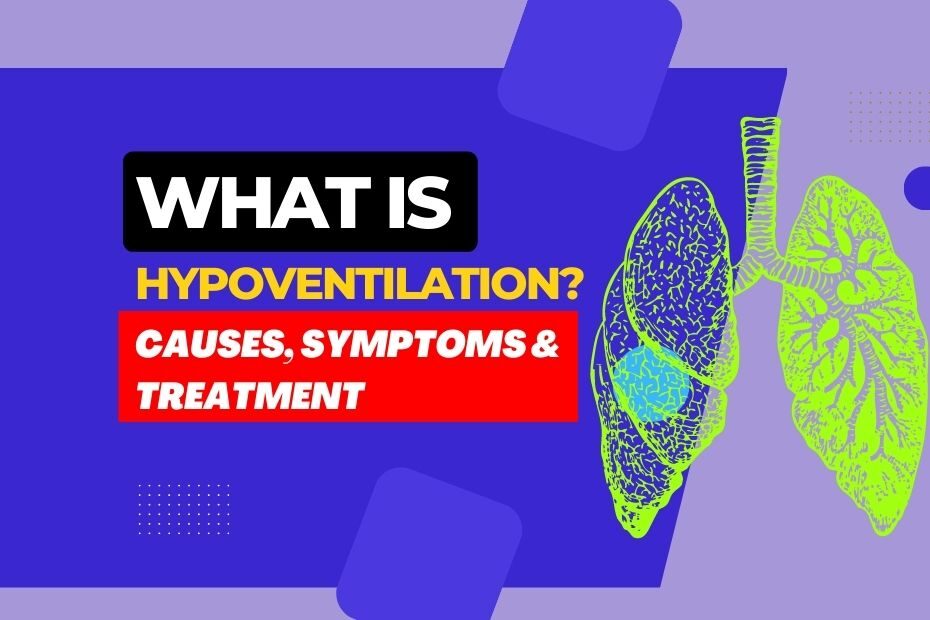Hypoventilation medical definition | What is hypoventilation syndrome?
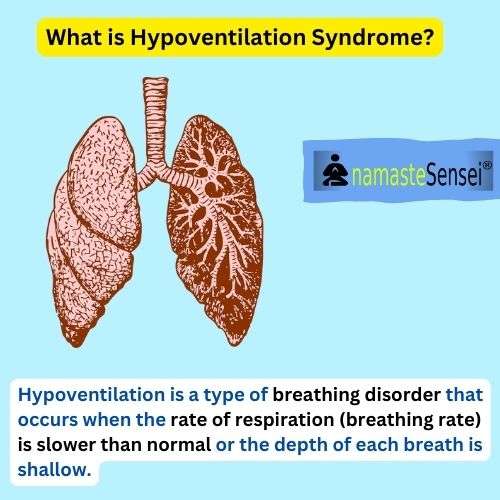
Are you curious about what is hypoventilation syndrome? This syndrome is a condition in which a person breathes too slowly or shallowly, resulting in low levels of oxygen in the blood and higher levels of carbon dioxide.
Common symptoms of hypoventilation include shortness of breath, fatigue, confusion, and anxiety. In this blog post, we will discuss the types, causes, symptoms, and treatments of hypoventilation syndrome and its types in greater detail.
Hypoventilation medical definition
Hypoventilation is a type of breathing disorder that occurs when the rate of respiration (breathing rate) is slower than normal or the depth of each breath is shallow.
This results in an inadequate exchange of oxygen and carbon dioxide in the lungs, leading to a decrease in the amount of oxygen that enters the bloodstream.
The body responds by increasing its effort to draw in more oxygen through deeper breaths, but this effort may not be sufficient to offset the decreased oxygen levels.
Common symptoms of hypoventilation include dizziness, lightheadedness, fatigue, confusion, and shortness of breath. In some cases, hypoventilation can lead to respiratory failure and even death if left untreated.
It has mainly two types described below:
Symptoms of hypoventilation syndrome
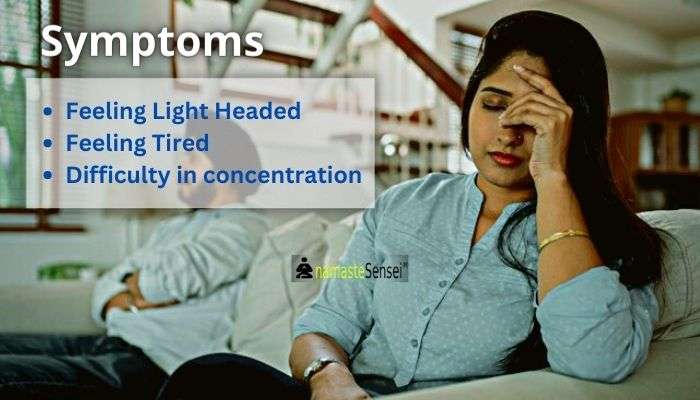
Hypoventilation can lead to a number of uncomfortable symptoms and can be quite dangerous if not addressed.
|
Causes of hypoventilation syndrome
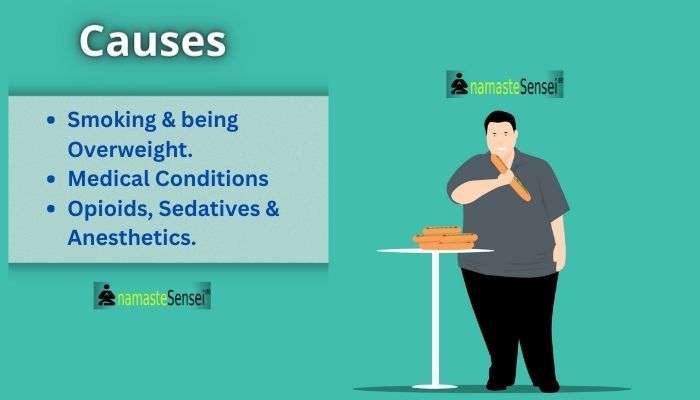
It can be caused by a number of factors, including lifestyle, medical conditions, and medications.
lifestyle
Lifestyle-related causes of this syndrome include smoking and being overweight or obese. Smoking reduces lung function, leading to reduced oxygen levels in the blood.
Additionally, people who are overweight and obese may not be able to move air through their lungs as easily as people with a healthy weight, resulting in hypoventilation.
Medical Condition
Medical conditions that can cause hypoventilation include COPD, asthma, heart disease, and sleep apnea. COPD and asthma reduce the amount of air that can be breathed in and out of the lungs, resulting in decreased oxygen levels.
Heart disease can reduce the amount of oxygen that is delivered to the organs, leading to this syndrome. Lastly, sleep apnea can lead to hypoventilation due to periods of reduced breathing during sleep.
Medications
Certain medications can also cause hypoventilation. Opioids, such as morphine and codeine, relax the muscles that control breathing and reduce respiratory drive. Sedatives, such as benzodiazepines, can also suppress respiration and lead to this syndrome. Additionally, some anesthetics used during surgery can reduce breathing.
Hypoventilation can be a serious medical condition that requires prompt attention. If you are experiencing any of the described symptoms, it is important to seek medical advice to determine the underlying cause and get the appropriate treatment.
Treatment of hypoventilation
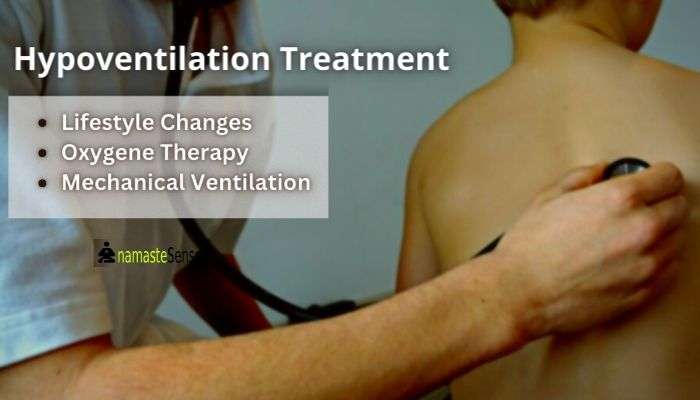
Treating it requires both addressing the underlying cause and managing the symptoms. Depending on the cause, treatment options may include lifestyle changes, medications, oxygen therapy, or mechanical ventilation.
medications
If a medical condition is causing hypoventilation, such as COPD, asthma, or sleep apnea, treating it can help reduce the risk of hypoventilation.
Lifestyle Changes
Lifestyle changes such as quitting smoking and eating a healthy diet can also be beneficial. For some conditions, medications may be necessary to help manage symptoms and reduce the risk of hypoventilation.
Oxygene Therapy
Oxygen therapy can also be used to increase the amount of oxygen in the blood and help relieve shortness of breath.
Mechanical Ventilation
If the patient is having difficulty breathing, mechanical ventilation may be required to help support the patient’s breathing.
It is important for patients to discuss their symptoms with a doctor in order to get an accurate diagnosis and determine the best course of treatment.
By understanding the causes and taking the necessary steps to manage them, patients can help reduce their risk of complications and improve their quality of life.
Prevention of hypoventilation
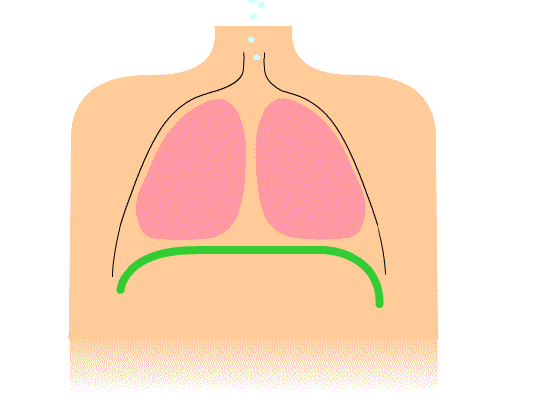
We can prevent hypoventilation in several ways.
- The most important step is to ensure proper hydration and nutrition. Eating a balanced diet and staying hydrated are essential for maintaining healthy breathing patterns.
- Exercise is also important, as it can help strengthen the muscles that control breathing. If you suffer from any underlying medical conditions, such as asthma or COPD, you should make sure to follow your doctor’s instructions for managing them.
- In addition, you should avoid things that may cause hypoventilation, such as smoking and air pollution. You can also practice relaxation techniques such as deep breathing, yoga, or meditation to help maintain healthy breathing habits.
- Finally, if you have any symptoms, we can seek medical attention right away to get the appropriate treatment.
what is obesity hypoventilation syndrome?
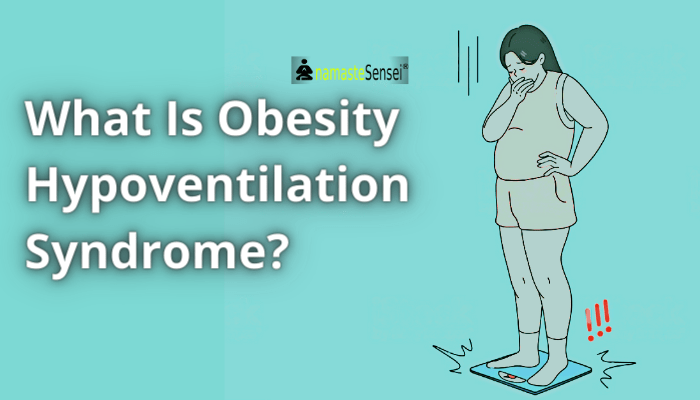
(OHS) Obesity hypoventilation syndrome definition
Obesity hypoventilation syndrome (OHS) is a condition where the body does not properly regulate its breathing because of excess weight.
It is characterized by an impaired ability to adequately exchange carbon dioxide and oxygen in the lungs, resulting in chronically low levels of oxygen in the blood (hypoxemia) and high levels of carbon dioxide (hypercapnia).
Pickwickian Syndrome
OHS is also known as Pickwickian Syndrome and is caused by a combination of factors, such as increased body fat, decreased muscle mass, and a decrease in lung capacity.
It increased respiratory effort during sleep leads to OHS i.e Pickwickian syndrome.
Symptoms
Symptoms of OHS can include daytime sleepiness, headaches, shortness of breath, and fatigue. OHS can also cause long-term problems such as hypertension, congestive heart failure, chronic kidney disease, depression, and type 2 diabetes.
Treatment
Treatment for OHS includes lifestyle modifications such as diet and exercise, pulmonary rehabilitation, oxygen therapy, medications, and mechanical ventilation.
what is congenital central hypoventilation syndrome? (CCHS)
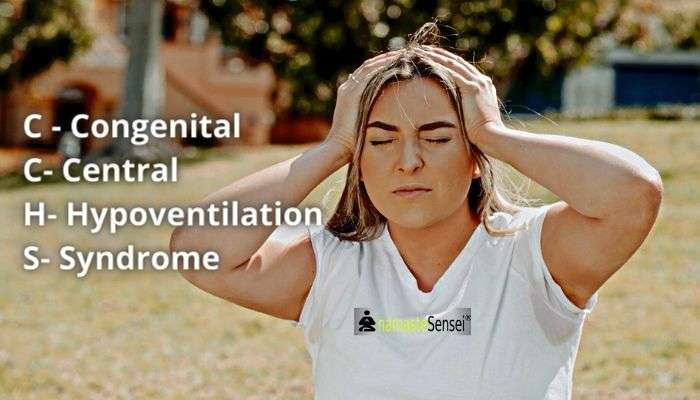
(cchs) congenital central hypoventilation syndrome definition
Congenital central hypoventilation syndrome (CCHS) is a rare disorder that affects the autonomic nervous system. It is characterized by an abnormally low rate of breathing, especially during sleep.
This can lead to dangerously low levels of oxygen in the blood and can cause serious medical complications if left untreated. CCHS can be caused by a gene mutation or can be passed down through families.
symptoms
Symptoms of CCHS can include low oxygen levels in the blood, restlessness during sleep, daytime drowsiness, chronic fatigue, morning headaches, irritability, and depression. A proper diagnosis of CCHS or OHS will include a physical exam, pulmonary function tests, and possibly genetic testing.
Treatment
Treatments for CCHS may include oxygen therapy, positive airway pressure machines (CPAP or BiPAP), lifestyle modifications such as weight loss, medication to help with sleep quality, and surgical procedures to improve breathing.
Conclusion
Hypoventilation syndrome is a common condition that affects many individuals of all ages. It is important to recognize the symptoms and causes of this syndrome, as well as its two main subtypes: obesity hypoventilation syndrome (OHS) and congenital central hypoventilation syndrome (CCHS).
Diagnosis typically involves pulmonary function tests, chest X-rays, arterial blood gas tests, and possibly an overnight oximetry study.
Treatment options for OHS include weight loss, lifestyle modifications, and oxygen therapy, while CCHS is usually treated with a combination of medications, ventilatory support, and breathing exercises.
Prevention strategies for both types of syndromes include avoiding smoking and excessive alcohol consumption, exercising regularly, and maintaining a healthy weight. With proper diagnosis and treatment, we can successfully manage this syndrome.
References
- Central Hypoventilation Syndrome – Click Here
Congratulations, you have read the complete article. If you have any doubts or queries, feel free to comment below. We will respond as soon as possible.
Or Email Us At [email protected]
Any topic you want us to cover? Let us know.
